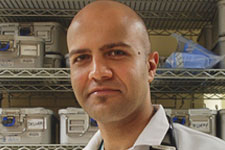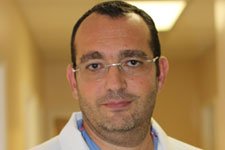Hysteroscopy
Hysteroscopy is a medical procedure that helps visualize the endometrium inside of the uterus. Hysteroscopy is performed with the help of a hysteroscope, which is inserted inside the uterus, through the vagina and cervix uteri. The hysteroscope is equipped with a light and a camera, which help visualize the endometrium on a video screen. It can be performed both for diagnosing different medical conditions, but also for treatment.
There are different types of hysteroscopes. They vary in size, but also depending upon the type of the procedure required.
Why is Hysteroscopy performed?
There are a lot of medical conditions that affect the reproductive system of a female, that do require hysteroscopy. Hysteroscopy may be performed in order to:
• Find the cause of severe and abnormal bleeding
• Find if the shape and size of the uterus are normal
• Find if there are any scars inside of the uterus, its shape and size in cases of infertility
• Find the possible cause of repeated miscarriages (usually hysteroscopy is performed if there are more than three miscarriages in a row)
• Look the opening of the Fallopian tubes, diagnose and treat any possible condition (in cases when the Fallopian tubes are blocked, doctors with the help of some special instruments can reopen their lumen using hysteroscopy)
• Find and remove fibroid polyps inside of the uterus
• Find and remove adhesions
• Check and take samples of endometrium for biopsy, in cases when endometrial cancer is suspected
• Perform endometrial ablation
• Place contraceptive implants into the opening of the Fallopian tubes in order to achieve permanent sterilization
• Find and remove misplaced Intrauterine Devices (IUD is a contraceptive method)
How is Hysteroscopy performed?
Hysteroscopy is usually performed by a Gynecologist in an operating room. Anesthetics are used in order to help you relax and numb the area. First a speculum is inserted into the vagina. Speculum is an instrument that helps spread the vaginal walls, in order for your doctor to have a better visualization of the cervix. The hysteroscope is then gently moved through your vagina, into the cervix and uterus. Gas or liquid is inserted inside of the uterus in order to have a better visualization of endometrium. Usually hysteroscopy last’s no more than 30 minutes, if other procedures are not performed.
Hysteroscopy can either be done under local anesthesia, regional anesthesia and general anesthesia.
Your doctor will schedule the hysteroscopy for the first week after the menstrual period, as it is the time of better visualization of the endometrium.
When is Hysteroscopy not recommended?
Hysteroscopy is not performed in cases when:
• The woman is pregnant
• The woman has an active pelvic infection
• The woman has uterine cancer or cervical cancer
Hysteroscopy may be difficult to perform in different anomalies of the uterus and cervix like: abnormal position of the uterus, obstructions of the cervical canal, narrowing or scarring of the cervical opening, etc.
Risks and Complications of Hysteroscopy?
Like any other medical procedure, Hysteroscopy has its own risks and possible complications. Complications of Hysteroscopy include:
• Injuries of the uterus and cervix during the procedure
• Infection of the uterus, cervix and vagina
• Air embolism
Problems with anesthesia can also occur.













